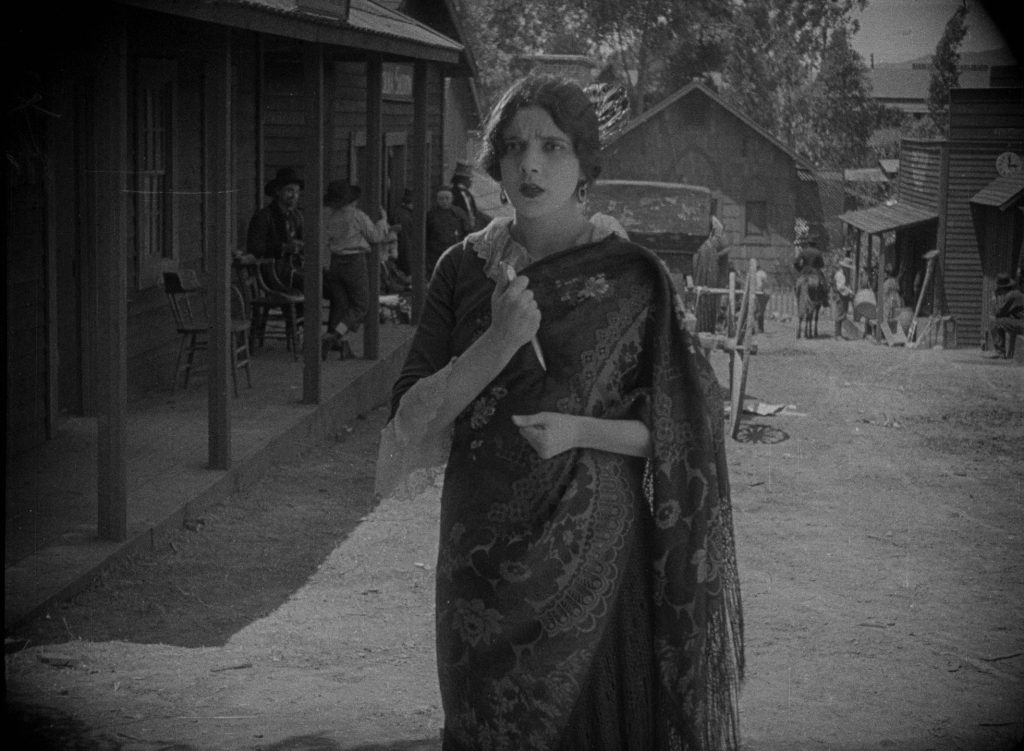Patrick Holzapfel
– Allan Dwan’s The Half-Breed (1916) starring Douglas Fairbanks and brought as a gift by the Cinémathèque française belongs to the handful of films of the retrospective I have already seen before. The others are the amazing Neun Leben hat die Katze by Ula Stöckl, Appunti per un’Orestiade africana by Pier Paolo Pasolini, Ich seh ich seh by Veronika Franz and Severin Fiala as well as a couple of short films.
– Monica Nolan has written a fantastic essay on The Half-Breed, especially about the way it treats the topic of racism. At the end of the text there is also a short description of the restoration process.

– I begin to see even more metaphors for archival work in the films. Now it is a lady saved from a burning forest that seems to mirror the international collaboration that was necessary to restore this film.
– How many kilometres of those ladies being rescued exist on film?
– Despite those typical gender imbalances we can say that The Half-Breed, thanks to the screenplay work by Anita Loos, features some of the more interesting female characters of the retrospective so far. Especially the existence of a fourth party in what would otherwise only be a classical triangle love-story makes the conflicts much more captivating.
– The way trees are filmed is very interesting. There is rarely a tree in the film we can see from top to bottom. Most of the time massive boles serve as a further framing device for the image appearing in the far left corner of the image. It reminds me of D.W. Griffith who tends to have some branch or leaves reach into the frames of his films.
– The film marks the third collaboration between Dwan and Fairbanks. The desire of Fairbanks to make a step into serious acting seems even more exceptional in retrospect than it must have felt in 1916. Yet, as it reads in the program notes of the Cinémathèque française: “(…) his co-star Alma Rubens said two years after the film’s release: ‘Douglas Fairbanks in a profound, dramatic role! Can you imagine that today?’“
– There is a weight to the knife in The Half-Breed. In two scenes people get stabbed and the moment Teresa, the woman doing the stabbing, fetches the radiant knife we can feel a violence and breathtaking significance connected to the deadly weapon that seems absent from a lot of contemporary filmmaking. A knife is neither just a knife nor is it something to make jokes with. There is a whole set of gestures, movements and lighting schemes connected to the knife. Expectation, fear and violent tenderness become visible.
More on Forever Film
Notes on Grauzone (1979, Fredi M. Murer)
Notes on Film and Reality (1942, Alberto Cavalcanti and Ernest Lindgren)
Notes on Yadanabon (1953, Tin Maung)
Notes on White Shadows in the South Seas (1928, W.S. Van Dyke, Robert J. Flaherty)
Notes on 30 Years of Motion Pictures (1927, Otto Nelson, Terry Ramsaye)
Notes on Sånt händer inte här (1950, Ingmar Bergman)
Notes on Valkoinen peura (1952, Erik Blomberg, Mirjami Kuosmanen)
Notes on Lime Kiln Club Field Day (1913, Edwin Middleton, T. Hayes Hunter, Sam Corker Jr.)